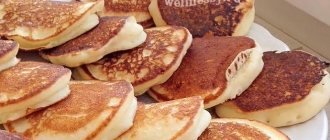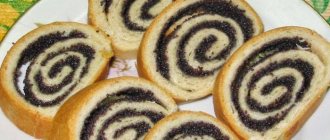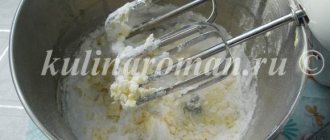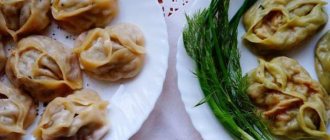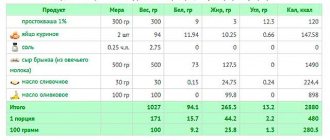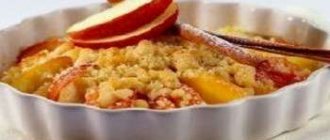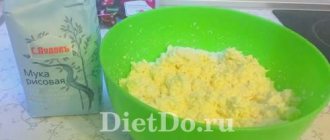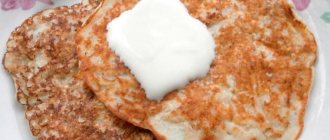- November 12, 2018
- Dough products
- Sergey Kostyuchenko Zhelyazkov
Homemade aromatic pastries are a holiday for every family, especially if they are freshly baked buns or pies. To make them airy and soft, you need to prepare yeast dough using dry or fresh yeast. Many housewives have repeatedly wondered how they differ from each other and what is the ratio of dry and raw yeast?
What is raw yeast
Raw or, as they are more often called, fresh yeast is a product of fermentation of living microorganisms: single-celled fungi, the vital activity of which is maintained in a humid environment at a temperature of 10 degrees. High-quality fresh yeast crumbles well, is creamy-gray in color, and has a pleasant “bready” smell. Their shelf life is limited, no more than 6 weeks. Once the product's shelf life has expired, you will need twice as much as usual. The composition of raw yeast is rich in useful substances. They contain vitamins B, H and E. In addition, they contain a lot of iron, potassium, phosphorus, zinc and fatty acids.
Fresh yeast is very often used in baking as a biological leavening agent for dough. To make the dough rise, yeast is added to water. Instead of water, milk is used for the pastry. If the temperature is not warm enough, they will not “activate.” It is also important that the heat is maintained for as long as possible, so cover the container with the dough with a napkin and place it in a warm place. Calculating the required amount of raw yeast is simple - usually 40 g of fresh yeast is needed for 1 kg of flour.
Easter cake for 1 kg of flour step by step recipe: homemade
Ingredients:
- 500 ml milk;
- 1 sachet (11-12 g) dry yeast (or 50 g regular);
- 1 kg flour;
- 6 eggs;
- 200 g butter;
- 300 g sugar;
- 250-300 grams of raisins;
- 1 tsp vanilla sugar;
- for glaze: 100 grams of powdered sugar, 2 egg whites. Confectionery sprinkles for decoration.
Cooking method:
Sift the flour.
Mix dry yeast with 0.5 kg of flour and add to warm milk, kneading the dough. If the yeast is ordinary, first dissolve it in warm milk, then add 0.5 kg of flour, and also knead the dough. The finished dough doubles in volume.
Separate the yolks from the whites. Beat the whites into a thick foam. Add the yolks mixed with sugar to the dough that has arrived by this time, add softened butter, and knead a light dough. Carefully fold the whites into the dough.
Add the remaining flour, finally knead the dough, remove, cover with a towel in a warm place for 2-3 hours.
While the dough is rising, prepare the raisins: wash, pour boiling water for 10 minutes, rinse again and dry with a towel.
Carefully add raisins to the risen dough, mix again, let the dough rise (about 20 minutes), and in the meantime, prepare the molds for baking Easter cakes: grease them with oil, lightly sprinkle with flour or semolina, so that the finished products can easily release from the molds.
Lay out the dough: fill 1/3 of the mold, if you fill more, your Easter cakes will “run away” and come out of the mold.
Preheat the oven to 100 degrees. Lightly grease the dough in the molds with yolks on top (those yolks that will remain from the eggs separated for making the glaze), in a loose layer, and place in the oven. Keep at this temperature for no more than 10 minutes, then increase the temperature to 180 degrees and bake the cakes until ready (about 45-50 minutes).
Do not open the oven door during baking. The finished Easter cakes will be an even brown color; we check their readiness with a wooden stick (they should remain dry after removing them from the product).
Making the glaze: beat the egg whites until stiff, add powdered sugar, and beat again. We cover the finished hot cakes with the finished glaze, it is convenient to do this with a pastry brush, and evenly coat the entire top. Sprinkle the sprinkles over the newly applied icing.
What is dry yeast
Dry yeast is distinguished from fresh yeast by the absence of moisture; it is produced either in the form of powder or in the form of granules by evaporating the liquid from the yeast. This explains the fact that less dry yeast is always needed, since the raw product contains, in addition to 25% of the microorganisms themselves, and 75% of water.
Dry yeast is divided into two types - instant and active. The latter, like fresh ones, must be added to warm water or milk (temperature from 35 ° C to 40 ° C). To further activate the yeast, sugar is added to the water. Their action is manifested by the formation of foam. As soon as this process begins, you can add flour and knead the dough.
Instant yeast first softens. To do this, they are mixed with flour and left for half an hour. They are considered the best option for bakery products. Dry yeast is stored for a long time, usually from 6 months to a year, but provided that the packaging is closed.
Dry yeast, like fresh yeast, is used in cooking for baking baked goods. Usually one package of the product (11 g) is enough to prepare dough from one kilogram of flour.
Easter cake for 1 kg of flour step by step recipe: the history of Easter cake
In fact, Easter cake appeared much earlier than the advent of Christianity itself. In the Old Testament there is no mention of Easter cake or the rituals associated with it. All this is because the history of Easter cake dates back to pagan times.
Many peoples had a custom of baking bread in the spring and sacrificing it to the earth. The ritual was dedicated to the gods of fertility. This once again suggests that bread has been the basis of the foundations at all times. It symbolized well-being, health and life itself.
In the scriptures about Jesus Christ, his meals with the apostles and the eating of bread are often mentioned. According to legend, when the Savior was crucified, his companions left his place free during the meal and put bread there. This symbolized the resurrection of Christ, his invisible presence and participation.
It is customary in Christian churches to bake bread. Many sacraments are associated with it, it is distributed to the suffering, it is a meaningful symbol.
The shape of the traditional Easter cake resembles a church with a dome. It’s not for nothing that a cross is usually depicted on the crust. This is a special baking - at times it is difficult to explain why yeast bread prepared for Easter can be stored for a long time without drying out or becoming moldy.
How to properly replace fresh and dry yeast
Culinary recipes often indicate what type of yeast is needed for cooking. How to replace fresh yeast with dry yeast is a simple question. As a general rule, 3 g of fresh product can be replaced by 1 g of yeast in powder or granule form. However, the 1:3 proportion applies only to baked goods; for the production of moonshine and mash, the proportions are different.
So, if the mash requires half a kilogram of pressed yeast, it can be replaced with 100 g of dry product, at a ratio of 1:5. For moonshine, the ratio of dry and fresh yeast is different - 1:6 (500 g of pressed yeast is replaced by 80 g of dry). Brewer's yeast is most often used for alcoholic beverages.
Let's take a closer look at the ratio of dry and raw yeast for dough.
To avoid any difficulties, below are the proportions for replacing dry with fresh using a tablespoon and a teaspoon in case there is no kitchen scale in the kitchen. So, if we take the proportions 1:3, it turns out:
- A 10-gram package of dry yeast is equal to 30 g of fresh yeast;
- 25 g of pressed yeast is equal to a large spoon of powdered yeast;
- A package of compressed yeast (standard - 50 g) will be replaced by two tablespoons of dry product.
If you only have a teaspoon on hand, you can determine the amount of dry yeast in terms of fresh yeast in this way:
- One spoon of dry yeast is equal to 12 g of fresh yeast.
- Instead of two teaspoons of powder, you can use half a 50-gram packet of raw yeast.
- To make 50 g of raw compressed yeast, you need 4 tsp. dry yeast. Although regular active dry yeast is similar in its action to instant yeast, which just needs to be added to flour, most cooks are inclined to believe that a little more regular yeast should be added to the dough due to the fact that they are not so strong.
Types of yeast
When it comes to this type of baking powder, many people by default imagine two types: “brick” and dry. “And 50 grams of yeast - how much dry yeast is that?” - a popular question, but not very correct, since dry yeast is different. At the same time, there are more varieties of yeast, let’s consider each type separately:
Regardless of what type of product is used, it must be tested before it “comes to life” in warm kefir.
So, for the dough, mix kefir and butter, heat a little until warm. Add salt and sugar there.
Mix yeast with flour.
Stirring constantly, pour the flour into the kefir-butter mixture.
Knead the dough until it becomes smooth, elastic, but soft.
Place in a bowl, cover with a towel and let rise for 1 hour. The mass will greatly increase in size.
Form the dough into the desired shape, place it in the mold and let it rise again for half an hour. This is especially recommended if you took 50 grams of fresh yeast. This is how much dry we found out earlier.
Grease the suitable products with milk, egg or sweet tea as desired, then bake at 200 degrees C for 25-30 minutes.
Remove from oven and let cool completely.
Ratio of dry and fresh yeast
Yeast conversion table
100% fresh yeast = 40% active dry yeast = 33% instant yeast.
In other words: -multiply the amount of instant yeast by 3 for an equal amount of fresh. -multiply the amount of active dry yeast by 2.5 for an equal amount of fresh. -multiply the amount of instant yeast by 1.25 for an equal amount of active dry yeast
62 grams of fresh yeast is equal to three 7 gram packets (21 g) of active dry yeast. One sachet 7 grams = 2 1/4 teaspoons dry yeast. 10 g wet = 3.5 g dry Yields approximately 9 grams. live yeast = 1 tsp dry
50 g “raw” = 1 packet of “quick” ones.
Proportion for replacing raw yeast with dry: 7 g raw yeast-1 teaspoon or 0.5 tbsp dry 10 g raw yeast-1.5 tsp or 0.75 dry 13 g raw yeast-2 tsp or 1 tbsp dry
Ratio of dry yeast to fresh pressed
When preparing baked goods, the question always arises of how much and what kind of yeast is best to put in it and how much dry yeast to replace fresh pressed yeast if this is not indicated in the recipe.
Fresh yeast - how to tell if it's good?
Fresh yeast is very flexible, but does not stick and does not get stuck on your fingers. And they are plucked off in layers, like good homemade cottage cheese. Only in cottage cheese these layers are large, while in yeast they are small. When breaking, pieces of yeast “squeak” on your fingers. The color is gray, with streaks of different tones, and the more yellowish-brownish the shade, the more stale the yeast. Be sure to pay attention to the corners of the piece; they should be absolutely exactly the same as the bulk of the entire “cube” of yeast. If they are weathered, they are also stale. And the smell of very fresh, unstagnant yeast cannot be confused with anything else. It smells “spicy” and “bready”. When there is a sweetness in the smell, or it simply smells unpleasant, it is better not to take these.
Fresh (pressed) and dry yeast are interchangeable.
In short, 1 g of dry yeast is equivalent in weight to 3 g of live pressed yeast. That is, if your recipe specifies 30 grams of fresh compressed yeast, you can replace it with 10 grams of dry yeast (divided by 3).
According to various sources, 2 teaspoons of dry yeast is equivalent to a 25 gram piece of fresh yeast and 10 g of fresh compressed yeast is equivalent to 1 tsp. dry, which doesn’t match a little
15 g of fresh yeast is equivalent to 1 tablespoon of dry yeast granules.
Easter cakes usually use 4 grams of fresh yeast per 100 grams of flour.
In general, on bags of yeast it is usually written how much compressed yeast is equivalent and how many grams of flour is calculated, these indicators vary depending on the manufacturer, so read on the packaging.
Here is information about instant yeast that is added directly to flour:
Dr.Oetker dry instant yeast, 7g sachet. A bag is designed for 500g of flour. The content is equivalent to 21-25 g of fresh yeast, i.e. half a yeast cube. Thus, if the recipe calls for 50 g of fresh yeast, then you need about 2-2.5 bags of dry yeast.
One sachet of SAF-MOMENT 11 g corresponds to 60 grams of fresh yeast and is used for 1 kg of flour. This bag contains approximately 4 teaspoons. That is, one teaspoon of SAF-MOMENT corresponds to approximately 15 grams of fresh pressed yeast.
And remember, all varieties of yeast ferment as quickly as possible at 30°C - any hotter and the yeast will be ruined.
Can be prepared according to different recipes. Modern manufacturers offer three types of yeast. Some recipes require the use of only fresh yeast, while some may use an instant alternative. However, housewives often face the question of the ratio of dry and fresh yeast of different types and manufacturers. Often, finding the necessary information significantly slows down the cooking process, because it is quite difficult to find in printed literature.
In what cases is it not recommended to replace yeast types with each other?
It is believed that any recipe can be adapted to a specific type of yeast, it is important to be aware of the correct ratio of dry and raw yeast. However, this is not quite true. If the product is used for the production of mash or moonshine, then compressed yeast is not recommended. In such cases, preference should be given to either dry yeast or special pressed alcoholic yeast, which is similar in appearance to raw yeast. The ratio of dry and fresh yeast in this case is very simple: for 15 - 20 g of powdered product you will need 100 g of alcoholic yeast.
Yeast consumption per 1 kg of flour. “And experience is the son of difficult mistakes!” - good advice on yeast dough
YEAST STANDING RATE
To prepare any yeast dough, be it dough for simple homemade buns or crumpets that replace standard bread or loaves on our table, or dough for pies or small holiday pastries, one of its main components, used as a leavening agent for dough, is baker's yeast. To get a good yeast dough, you need to know (at least approximately) how much yeast you need to use for its preparation, because an insufficient amount will lead to a deterioration in the quality of the dough during fermentation, and an excess of yeast, on the contrary, will allow the dough to sour during its preparation. The basic norm is: for one kilogram of flour weight, together with other components that make up the not very rich and lean dough, you need to take from 35 to 50 g of fresh yeast. For a richer dough, the yeast consumption rate can be increased, which is accordingly specified in the recipe. Several basic rules for preparing yeast dough One of the main rules for preparing any dough, which must be followed: pour liquid into flour, and not pour flour into liquid. Flour and starch, if provided for in the dough recipe, must be used only freshly sifted (preferably twice) - this will enrich the dough with oxygen and make the dough base of products made from it more fluffy. The liquid (or a separately prepared liquid dough base) should be added to the flour gradually, in small portions or poured in a thin stream, constantly stirring the dough. Fresh milk is most often used as the liquid component of the dough. If there is no milk, in some cases it can be replaced with other products (instead of 1 liter of milk): condensed whole milk with sugar - 400 g with a decrease in the amount of sugar for the dough; condensed skim milk with sugar - 330 g with a reduction in sugar and adding fat. Before use, condensed milk must be slightly warmed and strained through a sieve; powdered whole milk - 130 g of milk powder and 870 g of water. Before use, milk powder must be sifted and dissolved in warm water. Raw eggs used for yeast dough are best introduced beaten (separately the yolk and the foam of the whipped white) and preferably last. This dough will turn out much fluffier. DETERMINING THE QUALITY OF PRESSED YEAST With all the variety of different types of yeast available on the market today, the most used for making homemade dough is pressed baker's yeast, manufactured industrially and packaged in packs weighing from 100 g to 1 kg. The main condition for obtaining good results when using any yeast is that for each yeast baked product you must use only fresh yeast. Fresh pressed yeast has a pleasant sour milk smell, easily crumbles into small crumbs in your hands and does not stick to your hands. The consistency of the yeast is dense, the color is light. After lying in the refrigerator for 2-3 days, the yeast dries out and a dark crust forms on it, which will no longer participate in the fermentation process. You can use such yeast, but you must definitely try to update it by testing it for germination. How to test yeast for germination Take 1-2 tbsp. spoons of warm water, grind the prepared yeast in it, removing the dark dried pieces, and add a pinch of granulated sugar and flour. Mix everything well and let the mixture stand in a warm place for 10–15 minutes. If the yeast starts to come to life and bubble, then you can use it. However, we must firmly remember that the rate of adding such yeast to the dough will need to be at least doubled.
Because measurement and proportion are so important in the baking process, Baker writes her recipes as formulas, and they use a method known as Baker's Percentage. That is: they write their bread recipes in mathematical form and express the amount of flour as 100%. All other ingredients are then described as a percentage of this flour mass.
A typical bread recipe then, written as Baker's Percentage, would look like this. To do this, we simply multiply the weight of flour by the percentage of ingredients. If, for example, you wanted to make a batch of bread using 1 kilogram of flour, once you multiply your ingredients, your formula will become.
Continuation of the topic...
13. BLACK
Vegetables, mushrooms, fish, and crab sticks are fried in batter. To prepare the batter, flour and water are taken in a 1:1 ratio by weight. For every 100 g of flour take 1 egg, 1/4 teaspoon of salt and 4/2 teaspoon of sugar. The egg yolks are separated from the whites, the whites are beaten (for details of the process, see the section “Sponge dough”). Prepare a dough from flour, yolks, water with the addition of salt and sugar and carefully add the whipped whites into it, mixing from bottom to top. The prepared product is immersed in the resulting batter and deep-fried. The preparation of the product consists of breading it in flour before immersing it in batter; in this case, the batter adheres better to the product. There is a simpler batter, but I really like it. Its simplicity lies primarily in the fact that you do not need to use whites, especially whipped ones. Agree, the prospect of whipping whites always worries us a little, especially when they are used for some kind of auxiliary element, which, in essence, is the batter (especially think later, where should the yolks go?). The batter we will be talking about is also good because it turns out very crispy, and this is achieved by replacing a small amount of flour with starch and using carbonated water. The ratios are as follows - for every 1 volume of flour, take 1/4 volume of starch and 1 volume of mineral water with gas, salt to taste. Here’s another approach to preparing batter (I’ll admit, I’m saving it for another book, but oh well, let it be, as they say now, a bonus). In fact, such a batter does not exist on its own; it is prepared along with the product. By the way, I note that one good Chinese chef taught me this technique. This is a Chinese technique for making batter. It turns out very crispy, which is no coincidence, because many Chinese dishes take the form of small slices, often pre-fried in batter and then quickly heated in sauce. And yet the slices, while moistened with sauce, still remain quite crispy. I bring you, reader, to the fact that the batter turns into a very crispy crust. To the point: starch and raw egg whites are added to a product, such as spiced slices of raw pork. Everything is mixed vigorously and the slices are lowered one by one into the heated deep fat. Of course, such a batter can be prepared separately and simply dip slices of the product into it before frying. But the proposed method is more rational for certain reasons (I will give them in another book). And now only the ratio: per 1 kg. add 5-6 tbsp of the main product. spoons of starch and 3 proteins.
You can enter your calculations on screen in the table below
Try developing your own recipe for a batch using 5 kilograms of flour.
Check the results obtained from the 5 kilogram batch above
You'll also notice from the tables above that by adding kilogram weights you can get a total weight for your actual batch - this can be very useful for determining the quantities of individual loaves or rolls etc.
a batch of a certain size will do. 14. DOUGH FOR HOMEMADE NOODLES
(from the Cookbook of Elena and Alexey Vinogradov)
To make homemade noodles you need to spend a minimum of money, but make a maximum effort and spend an hour and a half of time. Anyone who has the patience to make noodles the first time will make them again later. To do this, you need to break an egg into a bowl and pour in as much water as can fit in two broken shells, add salt and half a teaspoon of sunflower oil, add flour and knead a stiff dough. Then wrap the dough in a plastic bag and let it rest for an hour. Well, then divide this bun into five parts and roll out each part thoroughly and stretch it with a rolling pin, sprinkling it with a little flour so that the pancake does not stick to the table and does not tear. You need to roll out the dough so thin that every scratch on your table can be seen through it. I warn you, this job is not easy and requires a little physical preparation. And don’t be afraid to ruin the first noodle pancake - the second one will turn out much better. When the dough turns into tissue paper, you need to put it on a towel to dry it a little. Under no circumstances should you overdry it, otherwise it will simply crumble. But now the most crucial moment has come. When the pancake is dry, roll it into a tube, place it on a wooden board and use a very sharp knife to cut into strips as thin as you can. This will be the real homemade noodles. Spread it in a thin layer on a towel and let dry. To the uninitiated, it looks like you've been cutting dough with nail clippers all night. Tell everyone this in the future so that they appreciate your hard work and diligence. This amount of noodles will be enough for several soups. It is better to cook soup with such noodles in chicken broth. Potatoes are not needed in this case; they are even distracting. It will need to be chewed, and such a soup should slip into the throat on its own, leaving an indescribable taste on the tongue. For color and beauty, you can add only finely chopped or coarsely grated carrots, bay leaves and spices to the broth. So, when the carrots are cooked, throw these noodles into the broth. It cooks for 2-3 minutes - no more, otherwise it will turn into porridge. Then add dill and parsley and you're done.
However, when discussing recipes, be careful not to get confused between the weight of the flour and the actual weight of the dough. This basic bread formula can be adapted in many ways to make many different styles of bread, and while there are acceptable ratios of one ingredient to another, individual recipes can vary to a rather staggering degree. For example: Brioche is a very rich, sweet, traditional French bread. To do this, you essentially adapt the formula above by substituting oil for oil.
We also recommend
- Where will the “Wait for Me” program be now instead of the first channel? Why was the “Wait for Me” program closed?
- Children's coloring pages online for girls Winx drawing coloring on the computer
- Winx coloring book Coloring pages for girls Winx for children
- The best April Fools' pranks in history
- What myths and legends (of any mythology) do you consider the most beautiful and interesting in plot?
- The most beautiful legends and parables!
Tips for housewives
When soaking live yeast in warm water or milk, you can only add sugar as a means of additional feeding for microorganisms. Salt suppresses their activity. If you add it ahead of time, the dough will not rise well.
Since information on the ratio of dry to raw yeast differs, it is advisable to study the dry yeast label, as each manufacturer states exactly how many grams of the product can replace a package of fresh product. For example, if we compare two popular brands of dry yeast SAF-MOMENT and Dr.Oetker, then 7 g of the latter (regular small package) is enough for 0.5 kg of flour and its contents are equivalent to 25 g of fresh yeast. The first type of yeast is more economical - 11 g is enough for a kilogram of flour and a small package can replace 60 g of fresh yeast. Answering the question: 10 grams of dry yeast is how much raw yeast, you can calculate that this amount is approximately equal to 55 g of pressed product.
Maltase activity of compressed yeast.
E. A. Isakova and G. I. Fertman [66] proposed using, when activating pressed yeast, instead of malt, aqueous extracts from rye malt sprouts, which contain a large amount of nitrogenous substances digestible by yeast, vitamins and growth substances. To reduce foaming during activation of pressed yeast, a method was used to add to the fermenting mass from 1 to 3% of its volume a saline solution with a density of 1.19 kg/l, which is 0.06% of the weight of flour in the dough. In this case, the lifting force remains almost unchanged, and the duration of filling the dosing tanks is reduced by two to three times [81]. Yeast is activated according to the following recipe: tea leaves - 170 l, water - 230 l, flour - 50 kg, compressed yeast - 18-28 kg, salt solution - 10 l. The humidity of the mixture is 85 - 86%. Activation of pressed yeast contributes to a significant improvement in the quality of the finished product, also in the production of high-prescription products. Thus, when producing high-calorie buns using conventional technology, their quality was low, and the duration of dough fermentation increased to 3-4 hours. To improve the quality, a double rate of pressed yeast was used. L.D. Tomashevskaya and A.N. Kharina [207] developed a no-spong method for preparing dough with activated yeast, thanks to which the consumption of yeast does not exceed the norm; The fermentation time of the dough is reduced, and the quality of the products is significantly improved. The essence of the method is that compressed yeast, milk, fat, eggs and 4/5 of all sugar enter the activation phase from the entire recipe. The mixture is left to ferment for 8-10 hours at 32-35° C until the acidity is 8° N. The lifting force should be 25-35 minutes. During the fermentation process, the mass is stirred once or twice. When kneading the dough, add all the other raw materials. The duration of fermentation of the dough is only 1.5-2 hours at 28-30 ° C with one kneading after 50-60 minutes of fermentation. Other ways to increase the fermentation activity of compressed yeast In addition to the described biochemical method of activating pressed yeast, other methods have been found that increase the intensity of fermentation of sugars by yeast. These include processing the compressed yeast suspension in a hydrodynamic vibrator and in a high-speed rotary kneading machine. A.G. Beschastnov and his co-workers [21] found that treating an aqueous suspension of pressed yeast for 5 minutes in an acoustic field of sonic and supersonic frequencies using a hydrodynamic vibrator used to prepare a fat emulsion (see p. 73) increases their ability ferment sugars, especially maltose. This is explained by the separation of yeast cells, due to which their contact with the nutrient medium increases, as well as the activation of the physiological activity of yeast cells. The last conclusion was made as a result of the fact that treated yeast on wort agar germinated after 12-15 hours, and untreated yeast only after 20-24 hours. The dough obtained with yeast treated in this way was loosened, softer and weaker, proofing was reduced , and baked bread was more porous, had a higher volume, and hearth bread had a larger height-to-diameter ratio. Such processing of yeast suspension is easily feasible, since many enterprises have hydrodynamic installations. Therefore, this method of yeast activation must be tested under production conditions. When the author, together with A.I. Skorikova [187], studied a continuously operating high-speed dough mixing machine of the rotary type (see p. 232), it was discovered that when a suspension of pressed yeast is passed through it, their fermentation activity in flour dough with intensification of mechanical processing is also significantly increased (Fig. 4). At 2800 rpm of the machine, gas formation increased by 69% in 2 hours, and by 27% in 3 hours . Fig. 4. Gas formation of yeast V at different machine revolutions per minute: 1 - 2800; 2 - 1400; 3 - 400; 4 - 0 (control). (solid lines). Similar results were obtained with dry yeast, but the effect of stirring affected their activity to a lesser extent: gas formation increased by 35% in 2 hours, and by 24% in 3 hours (dotted lines). In experiments with liquid yeast, activity increased slightly: the increase in gas evolution was only 6% in 2-3 hours. The same thing was observed when yeast was repeatedly passed through the machine at 400 rpm. It is necessary to take into account that pressed yeast, and especially dry yeast, are in suspension in an aggregated state in the form of conglomerates consisting of many cells. Therefore, an increase in fermentation activity is possible due to the disaggregation of these grains and the release of yeast cells. This is confirmed by the fact that dry yeast, with the same mechanical treatment, is activated less, since it produces stronger particles in suspension, and liquid yeast, in which the yeast cells are in a single, suspended state, is practically not activated with vigorous stirring. For the same reason, there is no reason to believe that mechanical treatment of the yeast suspension before fermentation improves the fermentation activity of the yeast due to changes in their physiological state. Counting the number of colonies that grew when sowing the treated suspension onto agar wort (Table 7) showed that with increased mechanical treatment of the suspension, the total number of colonies and the relative content of small ones increases. This indicates the grinding of suspension particles and an increase in their number. Table. Germination of yeast colonies
| Pressed yeast | Number of yeast colonies | Relative content of small colonies. % | |
| general | including small ones | ||
| Tests | 87 | 22 | 25 |
| Passed through the machine | |||
| at number, rpm: | |||
| 400 | 90 | 23 | 26 |
| 1400 | 107 | 35 | 32 |
| 2800 | 125 | 53 | 42 |
Thus, the fermentation activity of yeast with intensive mixing of their suspensions increases due to the disaggregation of yeast conglomerates in the suspension, thereby increasing the surface of contact with the substrate. Therefore, dry yeast, whose particles are stronger, are less activated than pressed yeast, and liquid yeast, whose cells are separated, do not respond to intense mechanical stirring. Rationing the consumption of compressed yeast Factory workers have repeatedly pointed out that when dosing pressed yeast, it is necessary to be guided not only by the approved recipes, but also by the lifting force of the yeast. The recipes for baked goods do not really take into account the quality of the yeast, the methods of preparing the dough, and the presence in the recipe of components, the presence of which in large quantities inhibits the vital activity of yeast cells. Groups of bakery products made from wheat flour to standardize the consumption of compressed yeast
| № | Products, | Bookmark, % by weight of flour | Yeast consumption with lifting force 60-70 min, % of flour weight | ||
| groups | type of flour | Sahara | fat | EGG | |
| 1 | Bread and bakery products made from flour of first and highest grades | ) 20 | ) 20 | 1 30 | 4,0 |
| 2 | Same | More than\15 | More than > 10 | More than / 10 | 3,0 |
| 3 | » » | ) 20 | 1 15 | To 10 | 2,5 |
| 4 | » » | 16—20 | 11—15 | (250 pcs per 100 kg of flour) | 2,0 |
| 5 | » » | 7—15 | 5—10 | — | 1,5 |
| 6 | » » | 6 | Up to 4 | — | 1,2 |
| 7 | » » | 3 | 1,0 | ||
| 8 | The same, from grade II flour | 0,7 | |||
| 9 | Bread made from wallpaper flour | — | — | 0,5 | |
